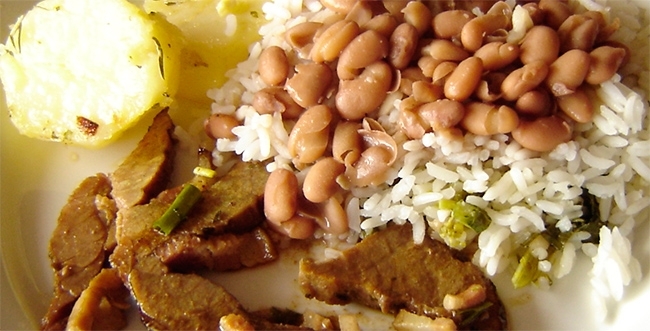

Research center supported by FAPESP launches new version of Brazilian Food Composition Table with data on the nutritional content and energy value of 1,900 items (photo: Henrique Dante de Almeida / Wikimedia)
Research center supported by FAPESP launches new version of Brazilian Food Composition Table with data on the nutritional content and energy value of 1,900 items.
Research center supported by FAPESP launches new version of Brazilian Food Composition Table with data on the nutritional content and energy value of 1,900 items.

Research center supported by FAPESP launches new version of Brazilian Food Composition Table with data on the nutritional content and energy value of 1,900 items (photo: Henrique Dante de Almeida / Wikimedia)
By Elton Alisson | Agência FAPESP – A new version of the Brazilian Food Composition Table (TBCA) has been issued by the Food Research Center (FoRC), one of the Research, Innovation and Dissemination Centers (RIDCs) supported by FAPESP.
The online database offers information on the chemical composition and energy value of 1,900 foods consumed by the Brazilian population, including raw and cooked foods, with added salt, oil and seasoning, manufactured products and mixed dishes. Composition is expressed in terms of content per 100 grams or per common household measure.
“The table provides information on 34 components, including vitamins and minerals, of the foods that are most important to the Brazilian population,” said Elizabete Wenzel de Menezes, a professor at the University of São Paulo’s School of Pharmaceutical Sciences (FCF-USP) and a member of FoRC’s research team.
The tool also presents the nutritional composition of typical Brazilian dishes according to different regional recipes. An example is couscous, which is made only with corn in some regions or with several ingredients, as in the version preferred in São Paulo State.
Users of the TBCA can also search for nutrients or foods that are sources of proteins in a specific group. The energy intake from an entire meal can be calculated by specifying up to seven food items.
“People can use the tool to find out how nourishing certain meals are, but of course, they should also consult a nutritionist or other healthcare professional if necessary,” Menezes told Agência FAPESP. The database also includes data on the chemical composition of foods belonging to Brazilian biodiversity, such as açaí berries (from the Euterpe oleracea palm tree).
“The biodiversity and regional food part of the database presents only original analytical information without modification or data aggregation. In future, however, it may add new data produced by researchers in studies on the composition of vitamins and minerals in the cagaita [Eugenia dysenterica, a fruit tree found in the Cerrado] or the maxixe [Cucumis anguria, similar to West Indian gherkin], for example,” Menezes said.
The researchers also plan to develop a smartphone app that can be used by consumers while waiting in line at a self-service restaurant, for example, to choose dishes based on quantities of nutrients, energy intake, and other factors.
Another idea is to develop software that enables nutrition professionals to prescribe diets based on information from the TBCA. “Use of the software would be restricted to nutrition professionals who recommend diets to patients,” Menezes said.
Groundbreaking project
The TBCA was Latin America’s first online food composition table and is now the most comprehensive produced in Brazil. Launched in 1998 as the result of a project adopted by the Brazilian Network of Food Data Systems (BrasilFoods), the table developed by Menezes and Franco Maria Lajolo, also a professor at FCF-USP, has been regularly updated since 2013, when researchers affiliated with FoRC took over this work.
“FoRC helped us update the table so that it can be used in forthcoming surveys of the food consumed by the Brazilian population,” Menezes said.
A new survey is currently under way to find out more about the nutrients consumed by Brazilians in their food. The last survey, conducted in 2008-09, could not cover nutritional data for food consumed in Brazil because the version of the TBCA then in place did not contain sufficient information on vitamins and minerals, and other tables did not include data on prepared foods.
“This shortage of nutritional data on food consumed in Brazil hindered a broader assessment of information from domestic surveys, so we set out to collect the missing data,” Menezes said.
Data from version 6.0 of the table may be used in the next Household Budget Survey (POF) conducted by IBGE, the national census and statistics bureau. “It will be the first time a nutritional assessment of the Brazilian population can be produced using domestic data,” Menezes said.
Republish
The Agency FAPESP licenses news via Creative Commons (CC-BY-NC-ND) so that they can be republished free of charge and in a simple way by other digital or printed vehicles. Agência FAPESP must be credited as the source of the content being republished and the name of the reporter (if any) must be attributed. Using the HMTL button below allows compliance with these rules, detailed in Digital Republishing Policy FAPESP.





